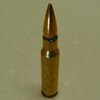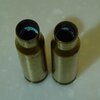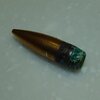Catpop
Member
I ran into an interesting situation today. About 5 years ago a reloading buddy gave me some 30-06 reloads a reloading buddy had given him. Vintage unknown, but they were bright and shiny. He wasn’t shooting big rifles anymore so he gave them to me for components.
I found them them today, about 120 or so.
Most were marked loaded with 48 gr IMR 4064 under a Hornady 165 gr soft point to 3.330.
The powder weights weighed a little low around 45-46grains. But the really strange thing was the powder was clumped and sticking together. I’ve seen this before in older ammo, especially foreign military, but not 10-15 year old reloads.
Also one case separated leaving the neck attached to the bullet.
There was also some verdigris inside the case.
Any ideas?
I found them them today, about 120 or so.
Most were marked loaded with 48 gr IMR 4064 under a Hornady 165 gr soft point to 3.330.
The powder weights weighed a little low around 45-46grains. But the really strange thing was the powder was clumped and sticking together. I’ve seen this before in older ammo, especially foreign military, but not 10-15 year old reloads.
Also one case separated leaving the neck attached to the bullet.
There was also some verdigris inside the case.
Any ideas?












